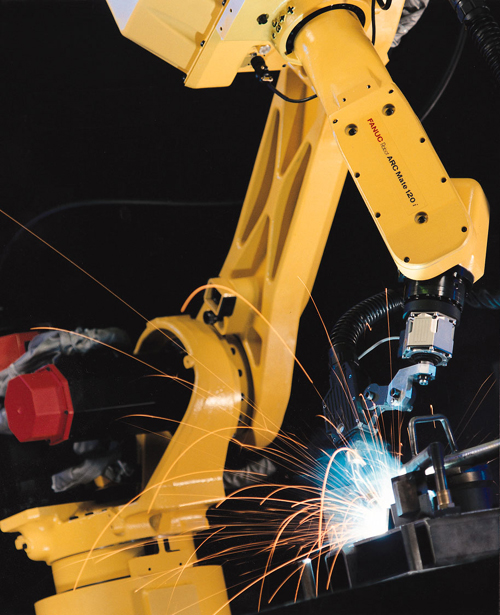
Everybody likes strawberries, except, perhaps the engineer developing a robotic strawberry packing system. Like everything natural, strawberries vary greatly in size, shape and weight. Their textured surface can be wet, and they crush easily. Developing robotic gripper systems to grasp and move fruit and vegetables is challenging. Fortunately for manufacturing companies, rigid cast, molded or machined parts, flat materials like cardboard and sheet metal, and even soft, flexible bags and pouches are all easier to handle.
Grasping
The most common way of grasping an object is with 2-finger robotic grippers. These pinch together, holding parts firmly for lifting and moving. This style is used for tending machines like presses and lathes, and for picking and inserting parts in assembly operations. Less often, 2-finger robotic grippers move outward to grip internal surfaces.
For cylindrical shapes like pipes and tubes, 3-finger robotic grippers sometimes work better. Typically these have two fingers opposing a third. A variant is the three-jaw chuck design to grip one end of circular objects. — where this design grips on one end
Most grippers are pneumatic, but servo-electric grippers are becoming more common. Initially more expensive than air cylinders, servo-electric grippers have lower operating costs and offer more control over finger speed, position and force.
Where 2-finger and 3-finger robotic grippers struggle is in lifting sheets. These bend when grasped only in one location, making them difficult to load or position. Here, the solution is a large area vacuum or magnetic grippers.
Suction and Attraction
Vacuum systems have an array of soft suction cups over a beam or plate. The robot presses them against the object that needs lifting, and a vacuum is drawn. Examples are loading sheet metal into a press, unloading a stamped piece, and interleaving cardboard layers in a pallet. Vacuum grippers also work well for palletizing soft or irregular packages like sacks or pouch-style pack formats, as well as anything easily crushable.
With enough surface area, vacuum gripper systems can lift several pounds, but lose grip if a cup fails to seal. Magnets are sometimes used for handling ferrous materials, particularly in sheet form. They are very controllable but limited in the materials they work with. As with a vacuum, surface contamination can prevent a good magnetic grip.
Adaptive Robotic Grippers
Robotic gripper systems can handle almost any solid shape, as well as softer and less predictable packages like bags of potato chips. However, irregular and highly variable shapes remain a challenge. Research on hand-like grippers continues, and soft, flexible gripper systems are slowly entering the market. These wrap around or otherwise conform to the shape of the object being picked, making it possible to lift something as soft as a strawberry.
To discuss current automation opportunities or discover new ones, contact us today at (844) 422-4382 or visit www.acieta.com